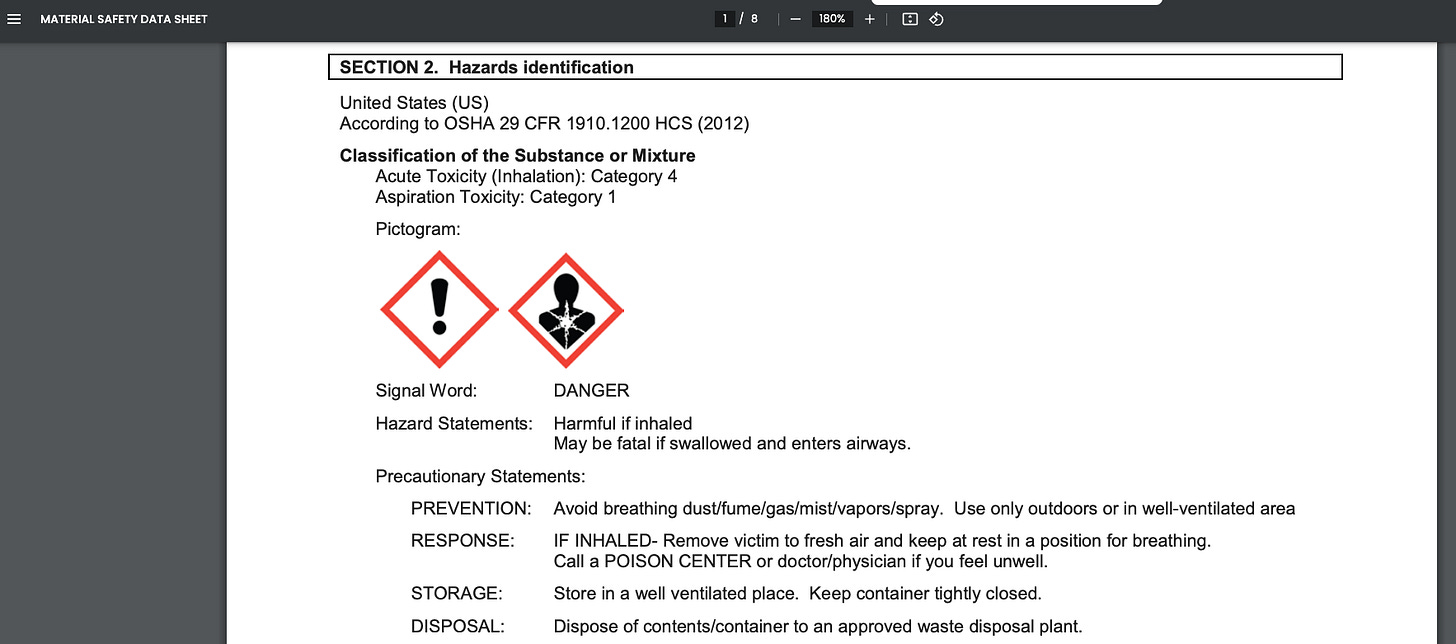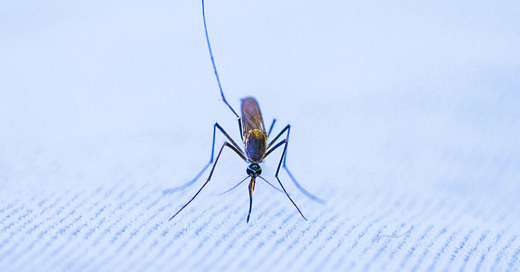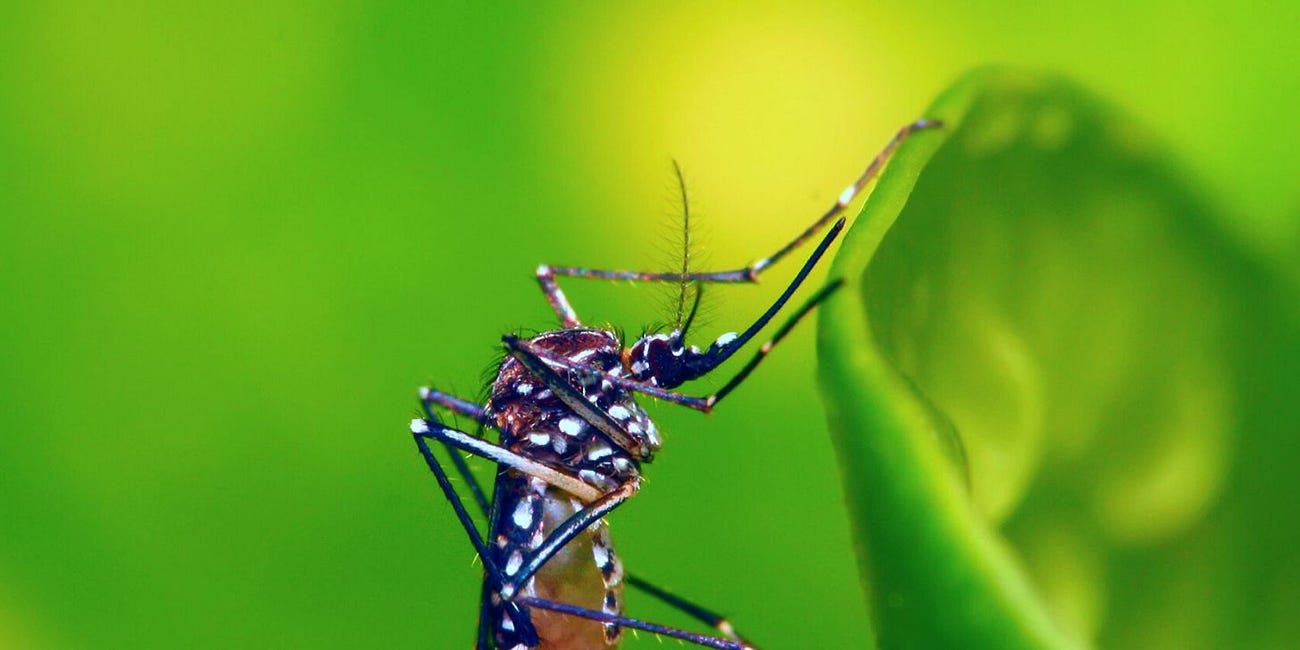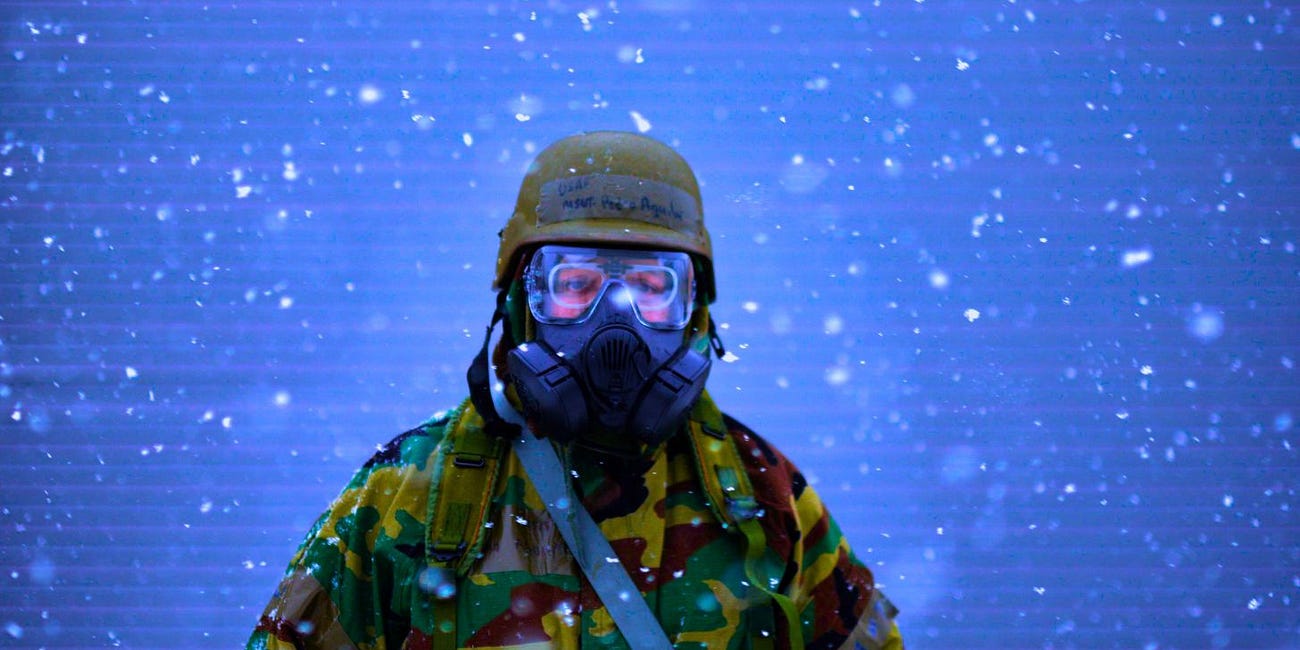'Toxic,' 'Hazardous,' 'Fatal' Mosquito Insecticide Sprayed Over New York, Massachusetts, New Hampshire Neighborhoods
"May be fatal if swallowed and enters airways," reads safety data sheet for insecticide ANVIL.
New York and Massachusetts are spraying neighborhoods with deadly insecticides in response to reported mosquito-borne illnesses.
Follow Jon Fleetwood: Instagram @realjonfleetwood / Twitter @JonMFleetwood / Facebook @realjonfleetwood
The efforts are part of “a mass pesticide spraying mission,” according to local reports.
Plans are underway to spray New Hampshire, too.
The process involves spraying chemicals from the backs of trucks as they drive through neighborhoods during the night.
Per NBC10 Boston:
Both aerial and ground spraying will be done weather permitting, anytime between dusk and about 4:30 a.m.
Residents living within the spray zones should assume their neighborhood is being sprayed until all spraying is completed, the Department of Public Health said.
City officials are claiming the number of mosquitos with West Nile virus is up this summer and that this will “help reduce transmission.”
Another stated concern is that these mosquitoes are vectors that transmit Eastern Equine Encephalitis (EEE) to humans.
However, a safety data sheet (SDS) provided by the NYC Department of Health and Mental Hygiene indicates that mosquito spray is toxic to humans.
The spray, ANVIL® 10+10 ULV, manufactured by Clarke Mosquito Control Products, Inc., is an “[i]nsecticide for control of adult mosquitoes,” according to the document.
The SDS indicates ANVIL falls under “Category 4” for acute toxicity via inhalation.
This classification means that the substance can cause harm if inhaled, particularly during the frequent and prolonged exposures that may occur in neighborhoods subjected to repeated spraying.
ANVIL therefore poses a risk, especially to sensitive populations such as children, the elderly, and those with pre-existing respiratory conditions.
More concerning is the “Aspiration Toxicity: Category 1” rating assigned to ANVIL.
This is the highest level of hazard for aspiration toxicity, indicating that if the chemical is ingested or inhaled and then enters the lungs, it can cause severe and potentially fatal damage.
This risk is particularly pronounced if the spray mist settles on surfaces or lingers in the air, increasing the likelihood of accidental ingestion or inhalation.
ANVIL is “[h]armful if inhaled” and “[m]ay be fatal if swallowed and enters airways.”

The ingredients in ANVIL are SUMITHRIN® (d-Phenothrin), Piperonyl Butoxide (PBO), and “Petroleum distillates, hydrotreated light,” all considered to be toxic.
Under the section titled “Toxicological information,” the SDS reveals humans can be exposed to ANVIL orally, through skin contact, and inhalation.
In the SDS’s assessment of acute toxicity, it says ANVIL is “[s]lightly toxic after ingestion. Relatively non-toxic after short-term inhalation. Moderately toxic after short term skin contact.”
Significantly, ANVIL has not been tested for mutagenicity, which refers to the ability of a substance to cause changes or mutations in the DNA of an organism.
It also hasn’t been tested for negative reproductive effects.
However, mice exposed to ANVIL over their lifetime do acquire liver tumors.
“Marginally higher incidences of benign liver tumors in mice were observed following lifetime high dose exposures to PBO,” the SDS reads.
ANVIL is “hazardous to humans and domestic animals” and requires “caution” when handling.
The Occupational Safety and Health Administration (OSHA) has determined ANVIL is a “hazardous chemical.”
One section of the SDS reads:
OSHA HAZARD COMMUNICATION STANDARD: This product is a “Hazardous Chemical” as defined by the OSHA Hazard Communication Standard, 29 CFR 1910.1200.
The spray is also “harmful if absorbed through the skin.”
“Avoid contact with skin, eyes and clothing. In case of contact, flush with plenty of water. Wash thoroughly with soap and water after handling and before eating, drinking, chewing gum, or using tobacco. Remove and wash contaminated clothing before reuse,” the sheet recommends.
Clarke claims it is not responsible for “loss, damage or expense arising out of or in any way connected with the handling, storage, use or disposal of the product.”
The SDS reads:
DISCLAIMER OF LIABILITY: The information in this SDS was obtained from sources we believe to be reliable. However, the information is provided without any warranty, express or implied, regarding its correctness. The conditions or methods of handling, storage, use or disposal of the product are beyond our control and may be beyond our knowledge. For this and other reasons, we do not assume responsibility and expressly disclaim liability for loss, damage or expense arising out of or in any way connected with the handling, storage, use or disposal of the product.
You can download the safety data sheet below:
Follow Jon Fleetwood: Instagram @realjonfleetwood / Twitter @JonMFleetwood / Facebook @realjonfleetwood
Spike in Mosquito-Borne Infections Follow Report Bill Gates-Linked Company to Release Mosquitos in Caribbean: Puerto Rico Declares Public Health Emergency
The U.S. territory of Puerto Rico and other nearby Caribbean islands have declared a public health emergency due to a spike in cases of dengue fever, a mosquito-borne viral illness characterized by high fever, rash, and muscle and joint pain.
American Bioweapons: Then & Now
The United States had an extensive offensive biological weapons program stretching back at least to World War II and the Cold War era.








The beekeepers in our area mounted a successful pushback based on laws protecting bees. This was about 4 years ago.
The government has been releasing GMO mosquitoes throughout the country. Perhaps it's a way for them to spread their man-made viruses and an excuse to spray toxins. What about the bees and the pollinators and the birds? Or vegetable gardens and fruit trees?
They covered this story on the highwire yesterday. Hopefully, Kennedy will get wind of it and talk about it.